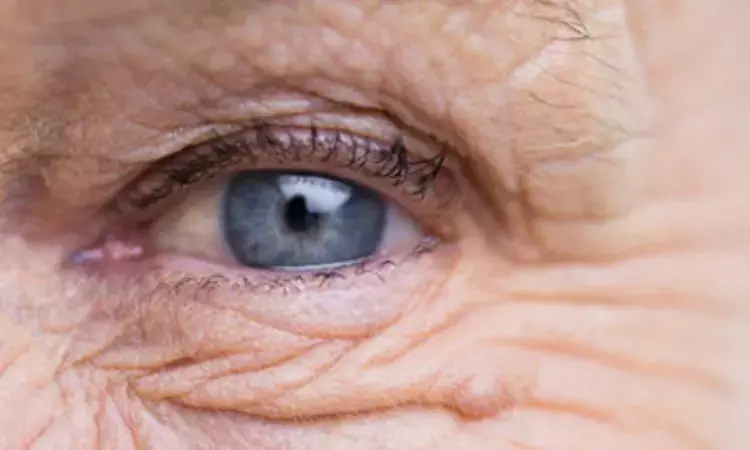- Home
- Medical news & Guidelines
- Anesthesiology
- Cardiology and CTVS
- Critical Care
- Dentistry
- Dermatology
- Diabetes and Endocrinology
- ENT
- Gastroenterology
- Medicine
- Nephrology
- Neurology
- Obstretics-Gynaecology
- Oncology
- Ophthalmology
- Orthopaedics
- Pediatrics-Neonatology
- Psychiatry
- Pulmonology
- Radiology
- Surgery
- Urology
- Laboratory Medicine
- Diet
- Nursing
- Paramedical
- Physiotherapy
- Health news
- Fact Check
- Bone Health Fact Check
- Brain Health Fact Check
- Cancer Related Fact Check
- Child Care Fact Check
- Dental and oral health fact check
- Diabetes and metabolic health fact check
- Diet and Nutrition Fact Check
- Eye and ENT Care Fact Check
- Fitness fact check
- Gut health fact check
- Heart health fact check
- Kidney health fact check
- Medical education fact check
- Men's health fact check
- Respiratory fact check
- Skin and hair care fact check
- Vaccine and Immunization fact check
- Women's health fact check
- AYUSH
- State News
- Andaman and Nicobar Islands
- Andhra Pradesh
- Arunachal Pradesh
- Assam
- Bihar
- Chandigarh
- Chattisgarh
- Dadra and Nagar Haveli
- Daman and Diu
- Delhi
- Goa
- Gujarat
- Haryana
- Himachal Pradesh
- Jammu & Kashmir
- Jharkhand
- Karnataka
- Kerala
- Ladakh
- Lakshadweep
- Madhya Pradesh
- Maharashtra
- Manipur
- Meghalaya
- Mizoram
- Nagaland
- Odisha
- Puducherry
- Punjab
- Rajasthan
- Sikkim
- Tamil Nadu
- Telangana
- Tripura
- Uttar Pradesh
- Uttrakhand
- West Bengal
- Medical Education
- Industry
OCT Biomarkers May Predict Retinal Atrophy Risk in nAMD Patients: Study

A new study published in the International Journal of Ophthalmology showed specific optical coherence tomography (OCT) features (type 2 macular neovascularization, reduced outer nuclear layer and central foveal thickness, and presence of intraretinal fluid) may be early indicators of increased risk for retinal atrophy in treatment-naïve patients with neovascular age-related macular degeneration.
Submacular fibrosis, photoreceptor shrinkage, and irreversible loss of central vision are all signs of advanced AMD. During the fundus oculi examination, retinal atrophy (RA) can be identified by the feature known as "geographic atrophy," which is the existence of delineated atrophic lesions of the outer retina brought on by the loss of photoreceptors, RPE, and choriocapillaris.
A noninvasive method for producing high-resolution cross-sectional pictures of the retina and underlying components is swept-source optical coherence tomography (SS-OCT). In order to predict retinal atrophy (RA) and visual function in patients receiving intravitreal aflibercept, this study was set to identify optical coherence tomography characteristics present at the diagnosis of neovascular age-related macular degeneration.
Analysis was done on OCT data obtained at the time of the diagnosis of AFM (T0), following the first (T1) and third (T2) intravitreal aflibercept injections, and 5 years after the diagnosis (T3). 46 eyes from individuals receiving therapy were included in the research. Visual acuity (VA) development over time and the relationship between OCT characteristics and RA were assessed.
The patients with RA at T3 had a lower rate of recovery or stability at T2 (90.48% vs 56.00%, P=0.019) and T3 (85.71% vs 8.00%, P<0.001), as well as a poorer VA (35.19±5.7 vs 8.90±2.3, P<0.001).
Type 2 macular neovascularization (MNV; 4.76% vs 36.00%, P=0.013), a thinner outer nuclear layer (ONL, 88.89±7.82 µm vs 71.38±14.14 µm, P=0.033), intraretinal fluid (IRF, 42.86% vs 80.00%, P=0.014), IRF without subretinal fluid at T0 (SRF, 4.76% vs 32.00%, P=0.027), and decreased central foveal thickness at T3 (CFT, 190.14±22.79 µm vs 124.32±14.35 µm, P<0.001) were all associated with the development of RA at T3.
Both groups had similar levels of SRF with or without IRF at diagnosis (90.48% vs. 68.00%; P=0.084). Overall, the significance of these OCT characteristics in early risk assessment and management methods is highlighted by the fact that type 2 MNV lowers ONL and CFT, and the presence of IRF at baseline may indicate a greater risk of RA in treatment-naive AMI patients.
Source:
Gagliardi, O. M., Alisi, L., Visioli, G., Dini, F., Albanese, G. M., Scordari, S., Marenco, M., Lambiase, A., & Giustolisi, R. (2025). OCT predictors of retinal atrophy in neovascular age-related macular degeneration treated with aflibercept. International Journal of Ophthalmology, 18(4), 648–655. https://doi.org/10.18240/ijo.2025.04.11
Neuroscience Masters graduate
Jacinthlyn Sylvia, a Neuroscience Master's graduate from Chennai has worked extensively in deciphering the neurobiology of cognition and motor control in aging. She also has spread-out exposure to Neurosurgery from her Bachelor’s. She is currently involved in active Neuro-Oncology research. She is an upcoming neuroscientist with a fiery passion for writing. Her news cover at Medical Dialogues feature recent discoveries and updates from the healthcare and biomedical research fields. She can be reached at editorial@medicaldialogues.in
Dr Kamal Kant Kohli-MBBS, DTCD- a chest specialist with more than 30 years of practice and a flair for writing clinical articles, Dr Kamal Kant Kohli joined Medical Dialogues as a Chief Editor of Medical News. Besides writing articles, as an editor, he proofreads and verifies all the medical content published on Medical Dialogues including those coming from journals, studies,medical conferences,guidelines etc. Email: drkohli@medicaldialogues.in. Contact no. 011-43720751


